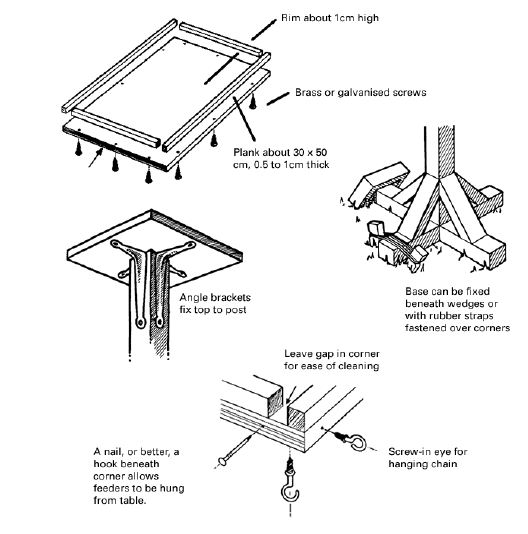This guide you the information you need to build a basic bird table. A bird table does not need to be fancy of complicated – the birds are only interested in a good supply of food in a safe, sheltered place.
Use wood that will not split or disintegrate when wet – exterior quality plywood from a sustainable source, 0.5 to 1 cm thick, is ideal. Any cheap piece of solid timber makes an excellent bird table. There is no maximum size, but don’t make the table too small or the birds will squabble and the shyer species will be kept away: 30 x 50 cm is about right. A rim about 1 cm high around the edge will help stop food from being knocked or blown off. Leave gaps at the corners to allow rain to drain away and to make cleaning easy. Before assembly, sand it smooth to remove crevices that can hold dirt and disease. It is best to leave the table untreated. If it must be treated to prolong its life, use a selected water-based preservative such as Fenceguard or Sadolin and make sure that it is dry before use.
A few nails or hooks in the edges of the table will be useful for hanging nut or seed feeders or fat balls.
A roof gives some protection to feeding birds (from rain, snow and hunting sparrow hawks).
Some birds may even roost at night on a table with a roof. It also provides a dry place for seed hoppers and nut containers. A roof can, however, deter the shyer and larger species from visiting and, in most cases, an open table is really just as good.

